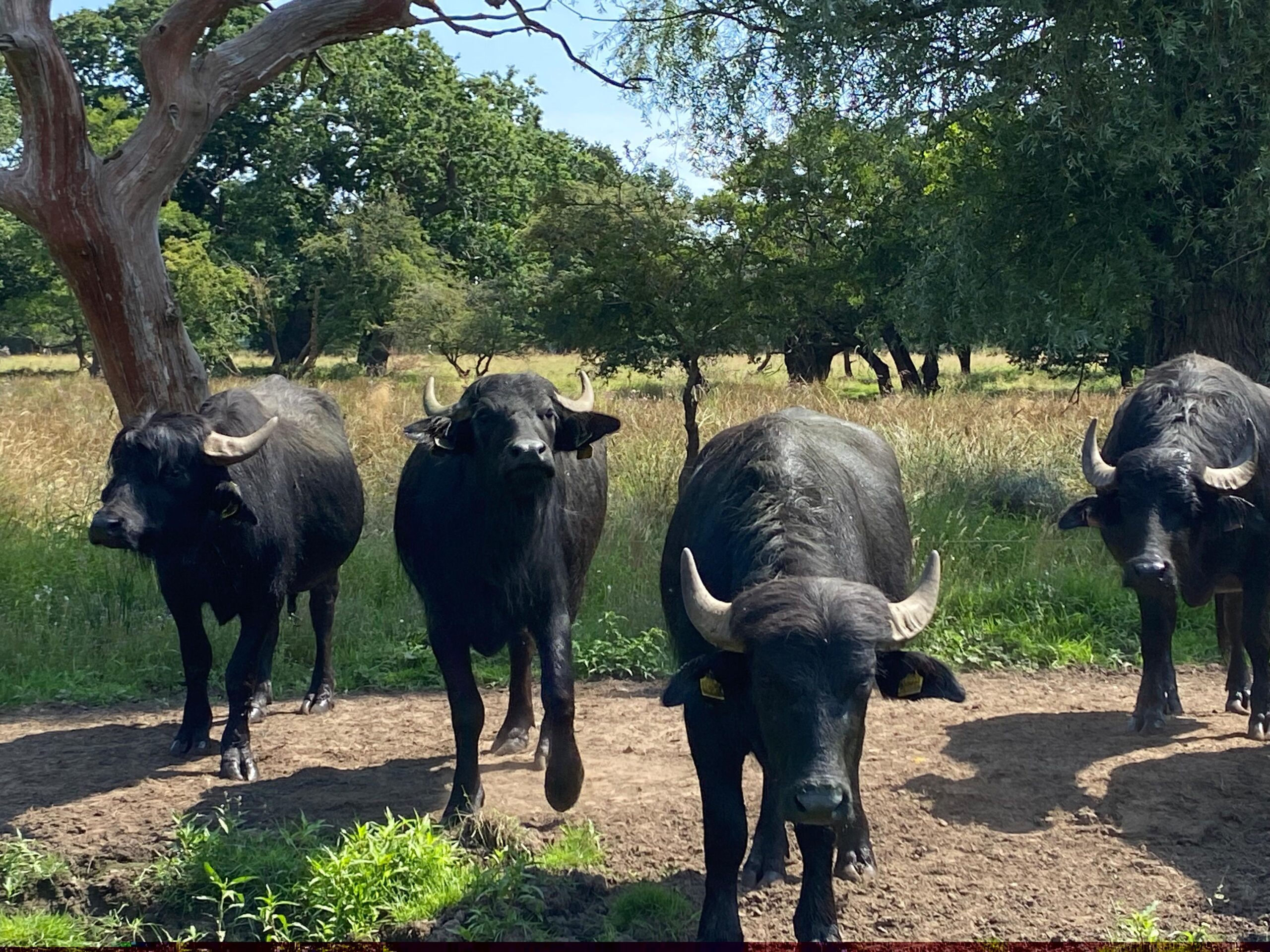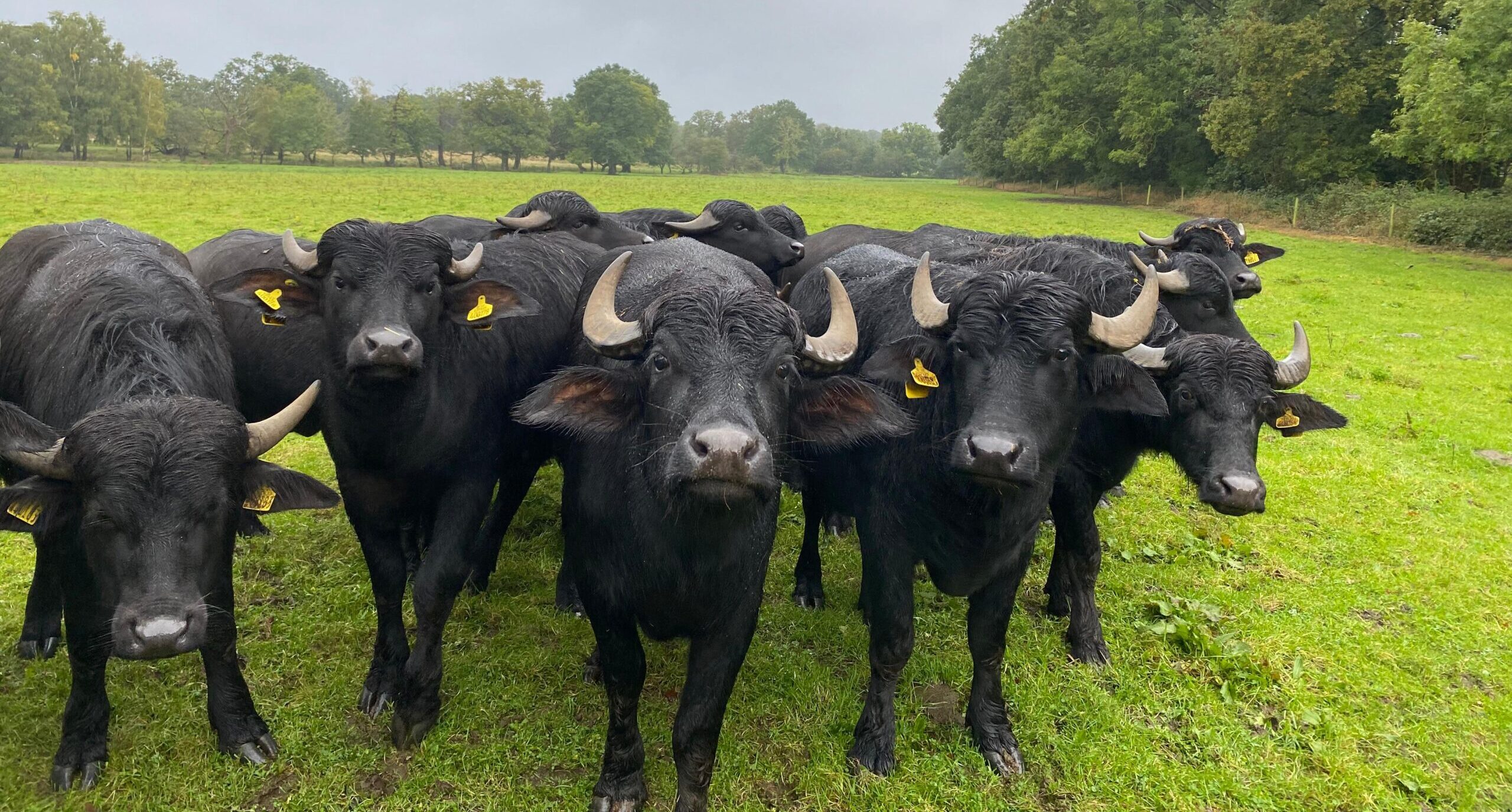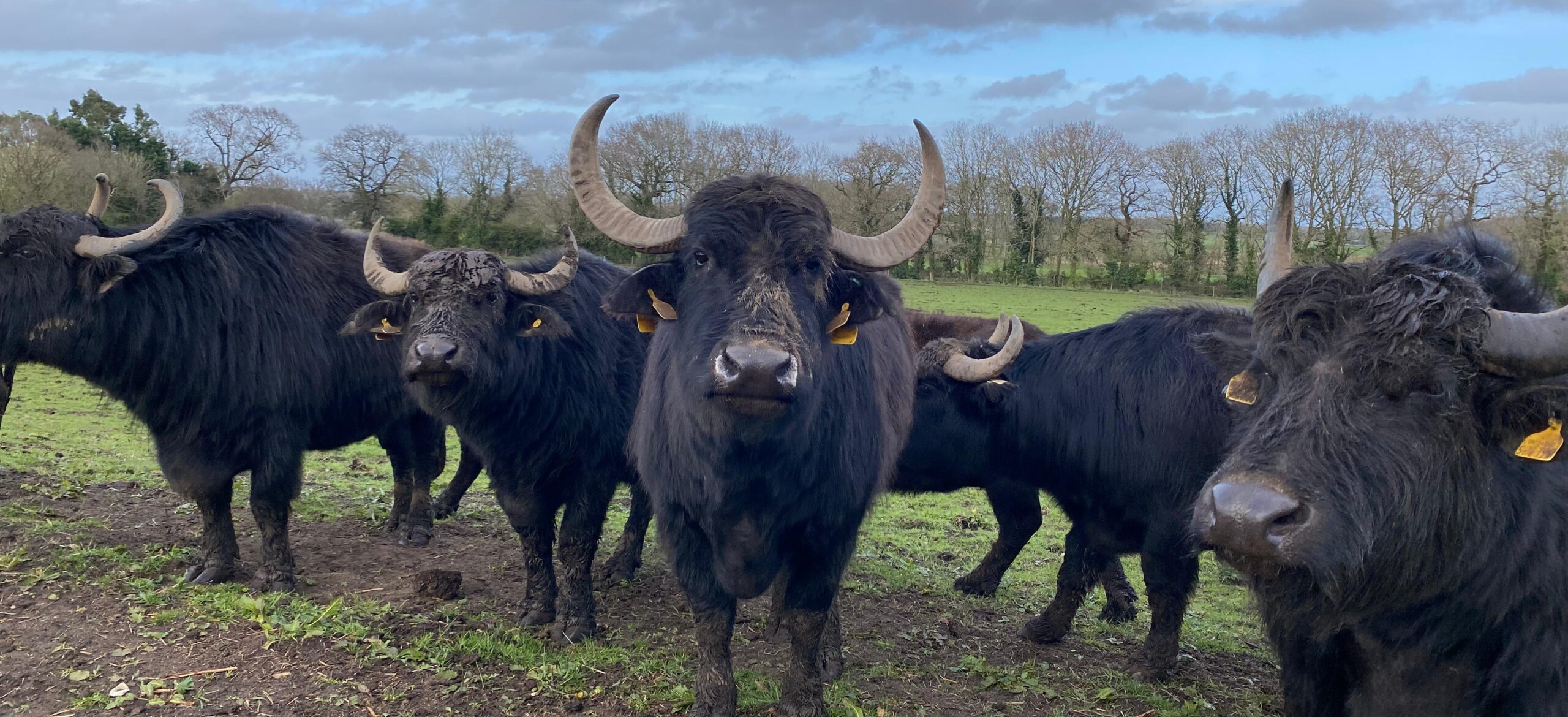How Water Buffalo Conservation Enhances Biodiversity and Ecosystems

Watatunga Wildlife Reserve is part of the Watlington Estate, a 2,000-acre property in the heart of the English countryside, home to a pioneering conservation project combining traditional livestock management with cutting-edge ecological restoration. At the core of this initiative is our water buffalo conservation work, focused on 100 acres of wetland where our herd of domestic buffalo plays an essential role in transforming and sustaining these vital ecosystems.
A Unique Water Buffalo Conservation Approach
Our water buffalo conservation herd comprises 15 breeding cows, one bull, and 12 followers (young calves still under their mothers’ care). Managed as a suckler herd, the calves remain with their mothers until they are weaned between 10 and 12 months of age. This natural rearing method allows the buffalo to grow and develop within a closely knit herd structure, which is key to their health and well-being.
The 40 hectares of wetland grass meadows they graze are some of the most challenging land conditions imaginable – wet, swampy, and prone to the presence of red water disease, which is harmful to domestic cattle but has no effect on water buffalo. Thanks to their remarkable physiological adaptations, water buffalo thrive in these conditions, making them the ideal species for habitat restoration in environments that would be otherwise unsuitable for traditional livestock.

Water Buffalo’s Physiological Adaptations for Wetland Grazing
Water buffalo possess several distinctive physiological adaptations that enable them to thrive in challenging wetland environments. Their longer, more efficient digestive system allows them to process and derive nutrients from tough, low-quality forage such as coarse grasses, thistles, and nettles. Additionally, their specialized ankle joints are designed to help them traverse waterlogged and muddy terrain with ease, preventing them from becoming bogged down. They also possess thick skin, covered in dense, water-resistant hair, which offers protection from lice, as well as from getting tangled in brambles. These unique traits make water buffalo ideally suited to graze in wetland habitats, where other livestock would struggle.
Regenerating Grasslands and Wetlands
The ability of water buffalo to consume a wide range of plant species, both nutritious and less desirable, has a significant impact on the ecosystems they inhabit. It results in the area being evenly grazed thus preventing any single plant species from becoming dominant. This helps maintain plant diversity and prevents the overgrowth of invasive species. Even grazing also supports the natural regeneration of the soil’s seed bank, allowing dormant seeds to germinate and promoting the growth of native plants like wildflowers.
As native vegetation flourishes, it creates a more resilient ecosystem that supports a broader range of wildlife. This boost in biodiversity strengthens the overall health of the wetland, helping to sustain a thriving, dynamic ecosystem that is rich in both flora and fauna.
Revitalising Waterways
Water buffalo conservation also play a crucial role in revitalising stagnant lakes, rivers, and wetlands. With their water-resistant coats and natural swimming abilities, they are able to wade into the centre of lakes and rivers, unlike domestic cattle, which tend to graze only along the edges. In doing so, buffalo stir up the water, promoting better water circulation. They will also clear unwanted vegetation such as reeds that can begin to take over the lake or river.

The removal of this overgrowth improves and increases biodiversity by attracting a variety of wildlife: including insects, birds, and mammals. These rejuvenated ecosystems are ideal for rewilding efforts, where the goal is to restore natural habitats and promote the return of native species.
Supporting Rewilding Projects Across the UK
Our herd is not only essential for the restoration of the Watlington Estate but also plays a key role in supporting rewilding initiatives across the UK. Once weaned, some of our buffalo calves are relocated to other conservation projects, from Northamptonshire to the Isle of Wight. Water buffalo are ideal for such initiatives due to their low maintenance requirements and minimal management needs. Unlike domestic cattle, buffalo require no supplementary feeding for most of the year, do not need medication, and have simple calving processes, making them a cost-effective and sustainable solution for habitat restoration.
Raising Awareness for Conservation
At Watatunga Wildlife Reserve, we maintain two non-breeding females specifically for educational purposes. These animals help visitors understand the vital role that water buffalo play in the management of wetlands and grasslands and the broader principles of rewilding. If you would like to see our water buffalo in person you can visit our guided tour options here.
By observing the buffalo grazing and interacting with the environment, visitors gain a deeper appreciation for the connection between land, livestock, and biodiversity. This hands-on experience is an essential part of our mission to educate the public about the importance of conservation and the potential for rewilding to restore vital ecosystems.
Our ongoing commitment to breeding and relocating buffalo is just one aspect of our broader environmental work. As we continue to manage the Watlington Estate with an emphasis on sustainability, biodiversity, and ecological health, we remain dedicated to using innovative, nature-based solutions to protect and restore our natural environment. Find out more about our conservation efforts here.
